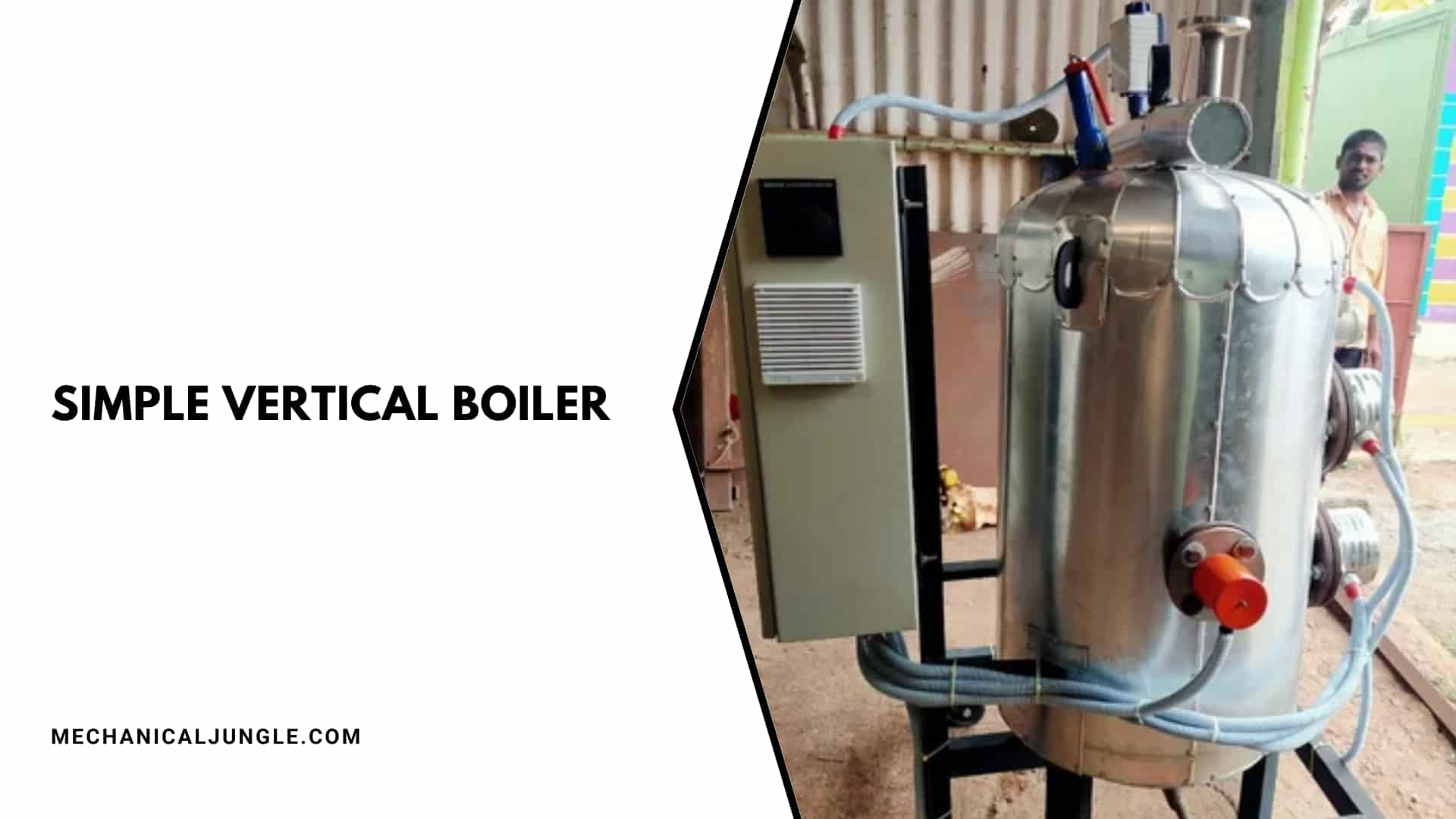
What Is a Simple Vertical Boiler?
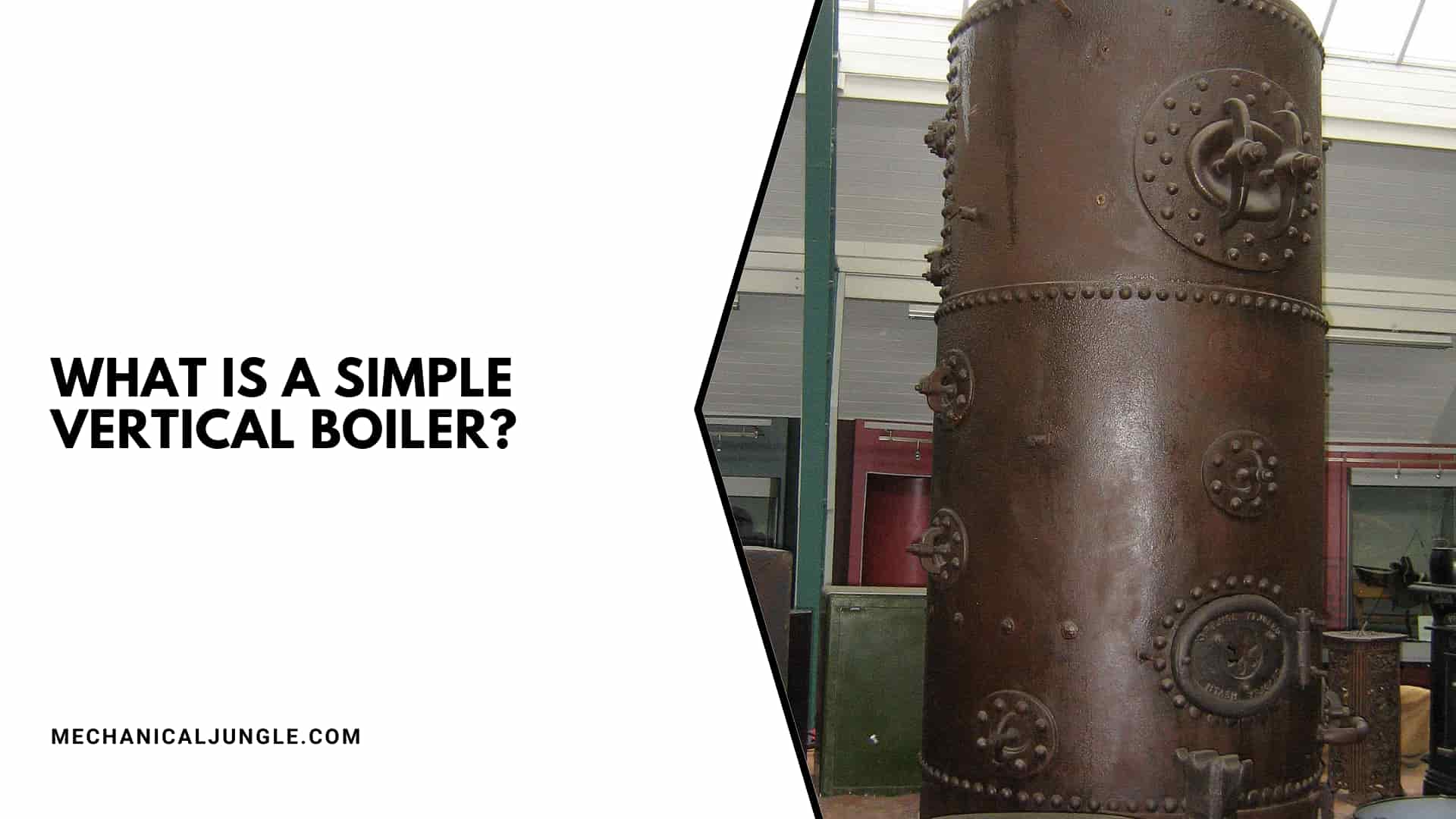
The simple vertical boiler is a boiler in which water is boiled inside a large vertical cylindrical shell, and steam is produced. This is the simplest type of firewater boiler. This boiler produces low pressure & a small amount of steam.
This boiler creates a pressure of about 10 bar. The construction of this boiler is much simpler and easier than any other boiler. These boilers occupy very little space, so it is used where less ground is available for operation.
In this boiler, steam is produced under low power conditions such as small power plants for power generation.
Working of Simple Vertical Boiler:
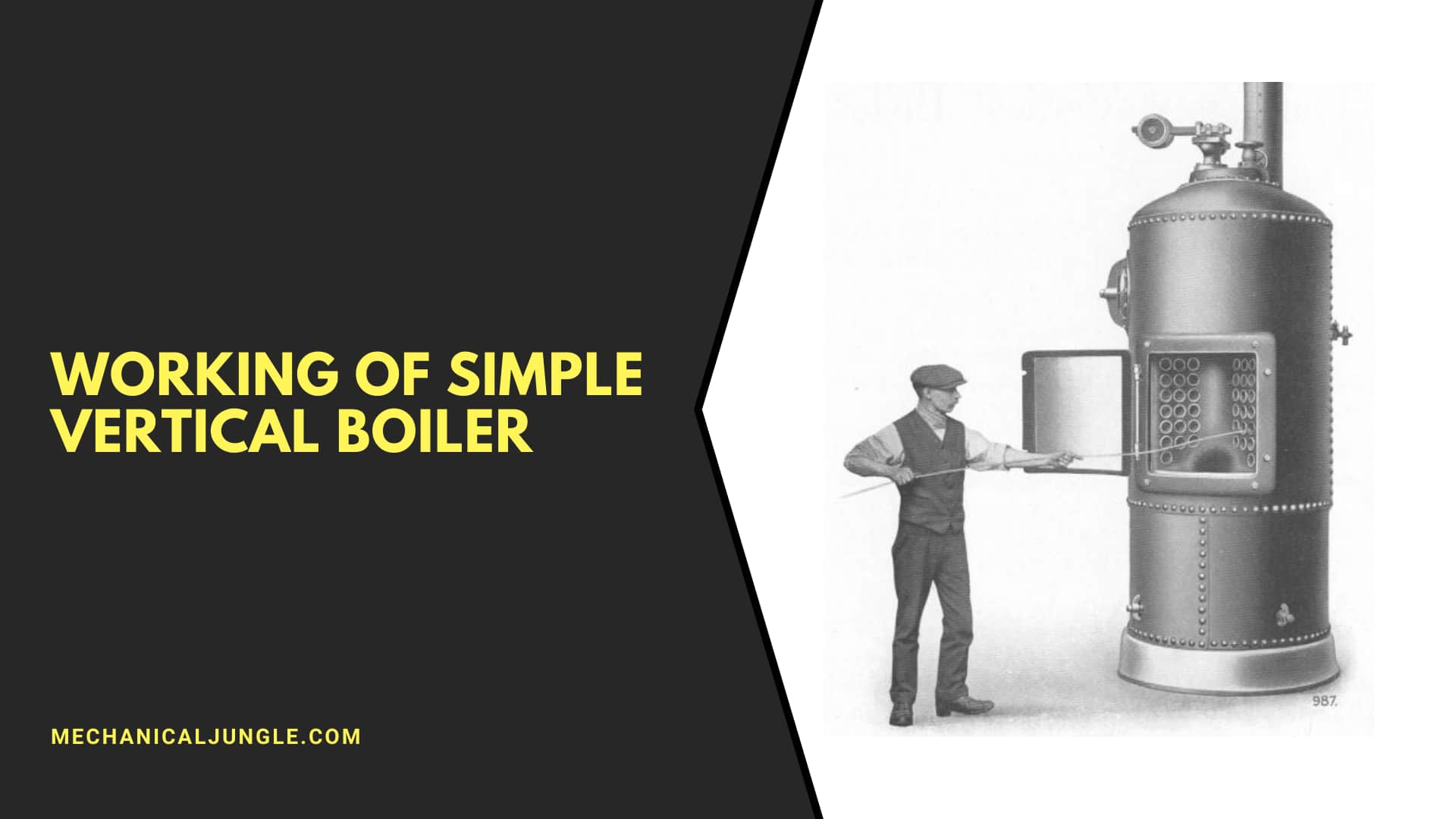
In simple vertical boilers, the first fuel is added to the furnace through a fire hole. Fuel is placed on the furnace at the bottom of the furnace. When the fuel burns, hot gas is produced, and the ash produced from burning the fuel is collected into ashes.
The hot gas produced by the burning of fuel is then sent to the cross tubes, and the waste gases are then transported to the atmosphere through the chimney.
The heat from the flue gases in the cross tube is transferred to the water, and the water is heated to produce steam. Current water due to convection goes from the lower end of the cross tube to the higher end by natural circulation.
The steam produced by the heat transfer from the vapor gas to the water is then collected at the steam location of the boiler; steam is collected until a certain pressure is reached, and then the steam is released to the gas turbine or engine or any other Use is passed.
Construction of Simple Vertical Boiler:
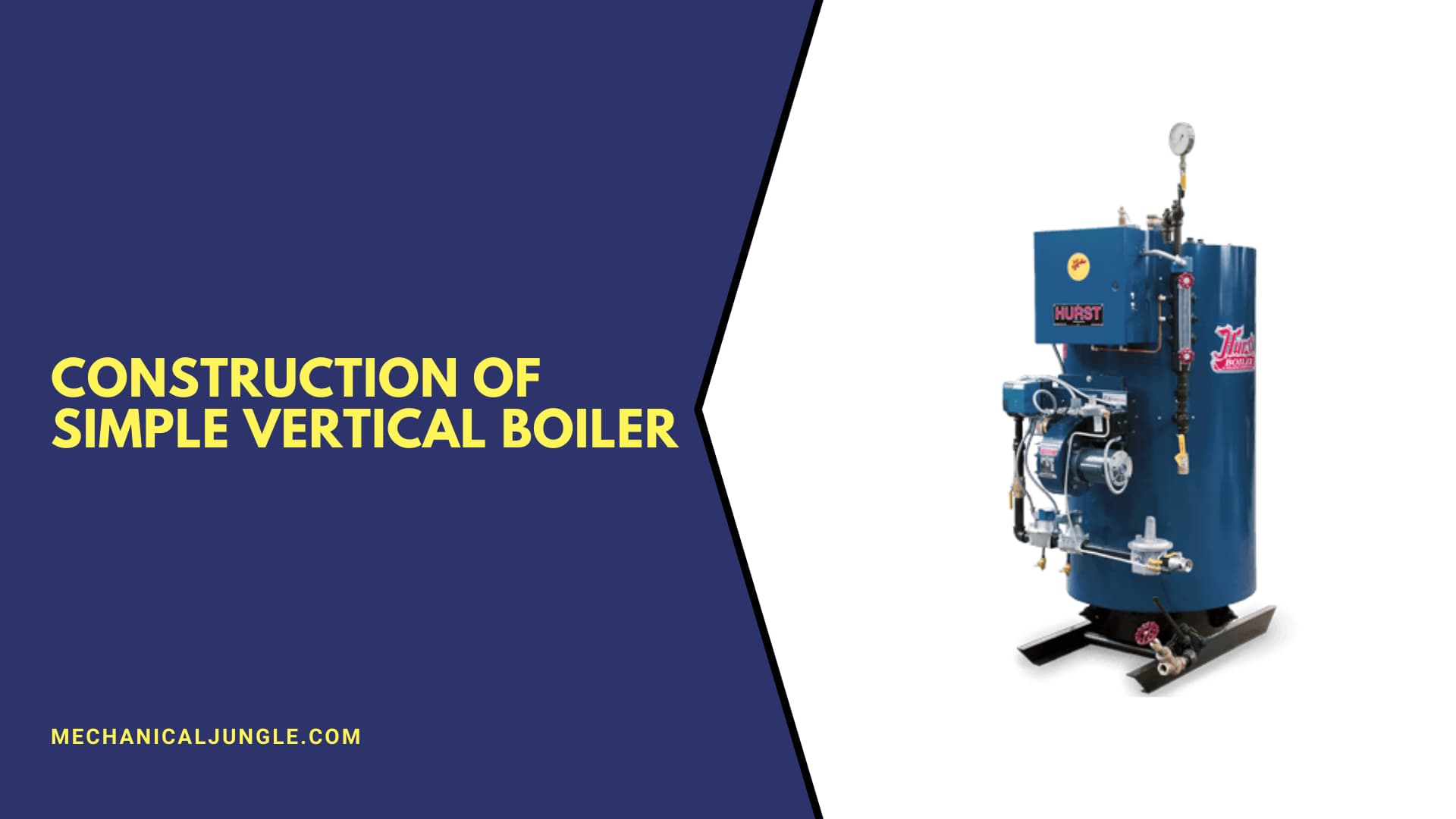
The largest part of the simple vertical boiler is the vertical cylindrical shell. This is the outermost part of the simple vertical boiler, with other boiler parts contained inside this part. Inside this shell, there is a firebox under the shell.
This firebox consists of a furnace, a furnace, and an ashpit. The grate is present below the firebox where fuel or coal is kept and burned in the furnace.
The ashpit is under the furnace where the ash created by the burning fuel is collected. The coal is introduced through the fire hole in the firebox. The cross tube is present in the center of the boiler and is placed horizontally. This tube transfers heat from the flue gas to the water.
The chimney is present above the cross tube. The flue gases from the cross tube are passed into the chimney where it leaves the boiler and goes into the atmosphere.
Parts of a Simple Vertical Boiler:
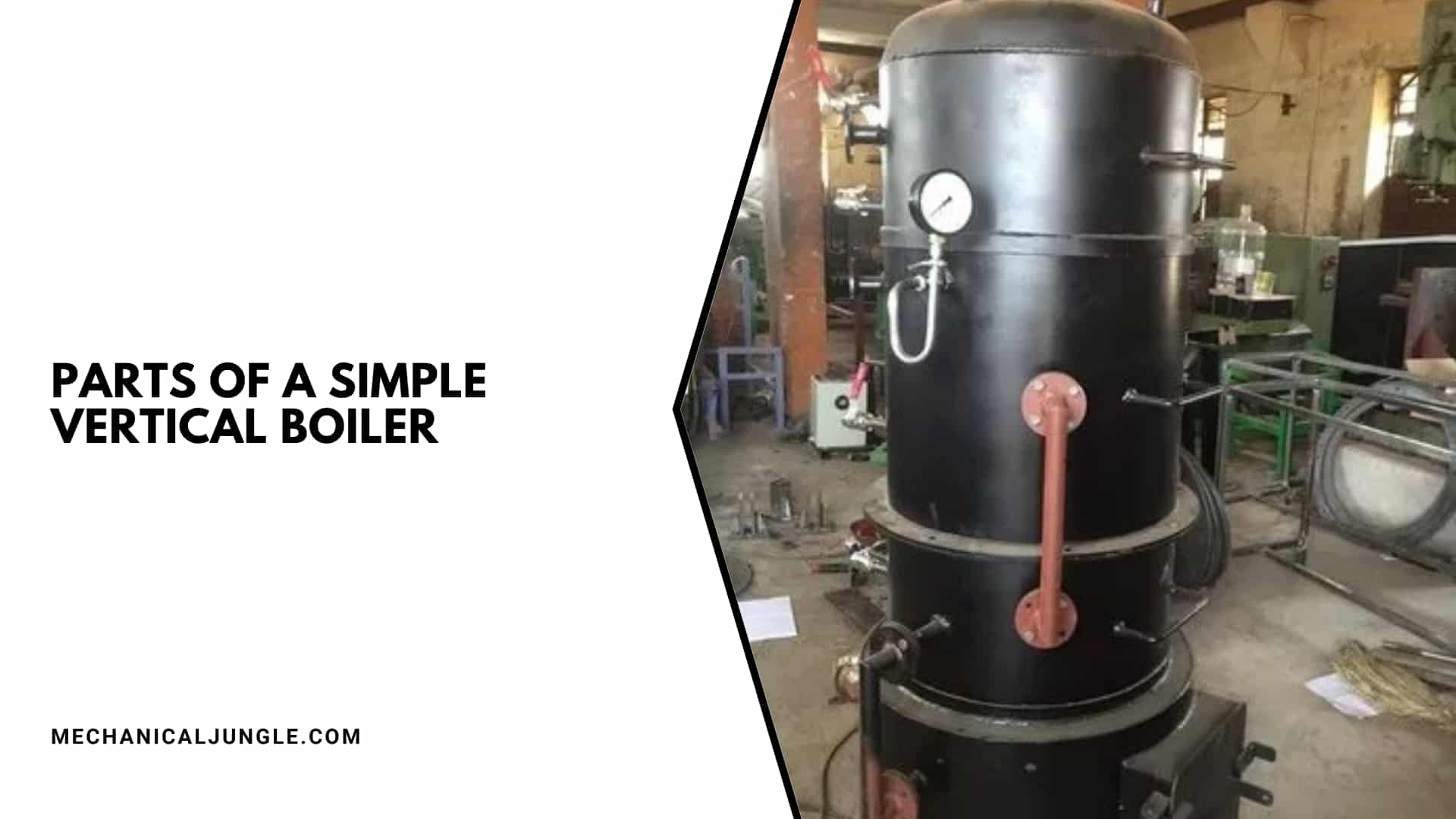
#1. Vertical Cylindrical Shell
This is the outermost cylindrical vertical shell of the boiler. Other parts of the boilers are inside this part. Most of this cylindrical shell is filled with water, and the rest is for steam.
#2. Cross Tubes
One or more cross tube is riveted or flanged to enhance the heating surface and improve water circulation.
#3. Furnace (or Firebox)
Furnaces are used for the combustion of coal. Coal is burnt here to produce heat.
#4. Grate
It is present under the furnace. This is the place in the furnace where coal is kept.
#5. Fire Door or Fire Hole
Coal is poured into the furnace through this hole or door.
#6. Ashpit
It is available in the boiler to collect the ash deposited by the furnace.
#7. Hand Holes
Hand holes are present opposite the end of each cross tube for cleaning the cross tube in the boiler.
#8. Chimney
A chimney is a vertical cylindrical pipe that extends from the top of the firebox to the 1the top of the shell. It is used to pass smoke from the boiler to the atmosphere.
#9. Steam Stop Valve
The function of steam stop valves is to regulate the flow of steam from within the boiler and stop it completely if required.
#10. Safety Valve
The safety valve is a device that prevents the boiler pressure from rising above its normal working pressure when the boiler pressure exceeds the normal working pressure, thus allowing excess steam to pass into the atmosphere Until the pressure returns to its normal value.
#11. Pressure Gauge
Pressure gauges are used to measure the pressure of steam inside the boiler. It is arranged in front of the boilers.
#12. Water Level Indicator
It is an important device, which indicates the water level inside the boiler. This is a safety device on which the boiler’s safe work depends.
#13. Fusible Plug
The function of the fusible plug is to ignite the boiler furnace when the water level falls below the unsafe level and thus avoid explosion, which may be caused by overheating of the tube and the shell.
Application of Simple Vertical Boiler:
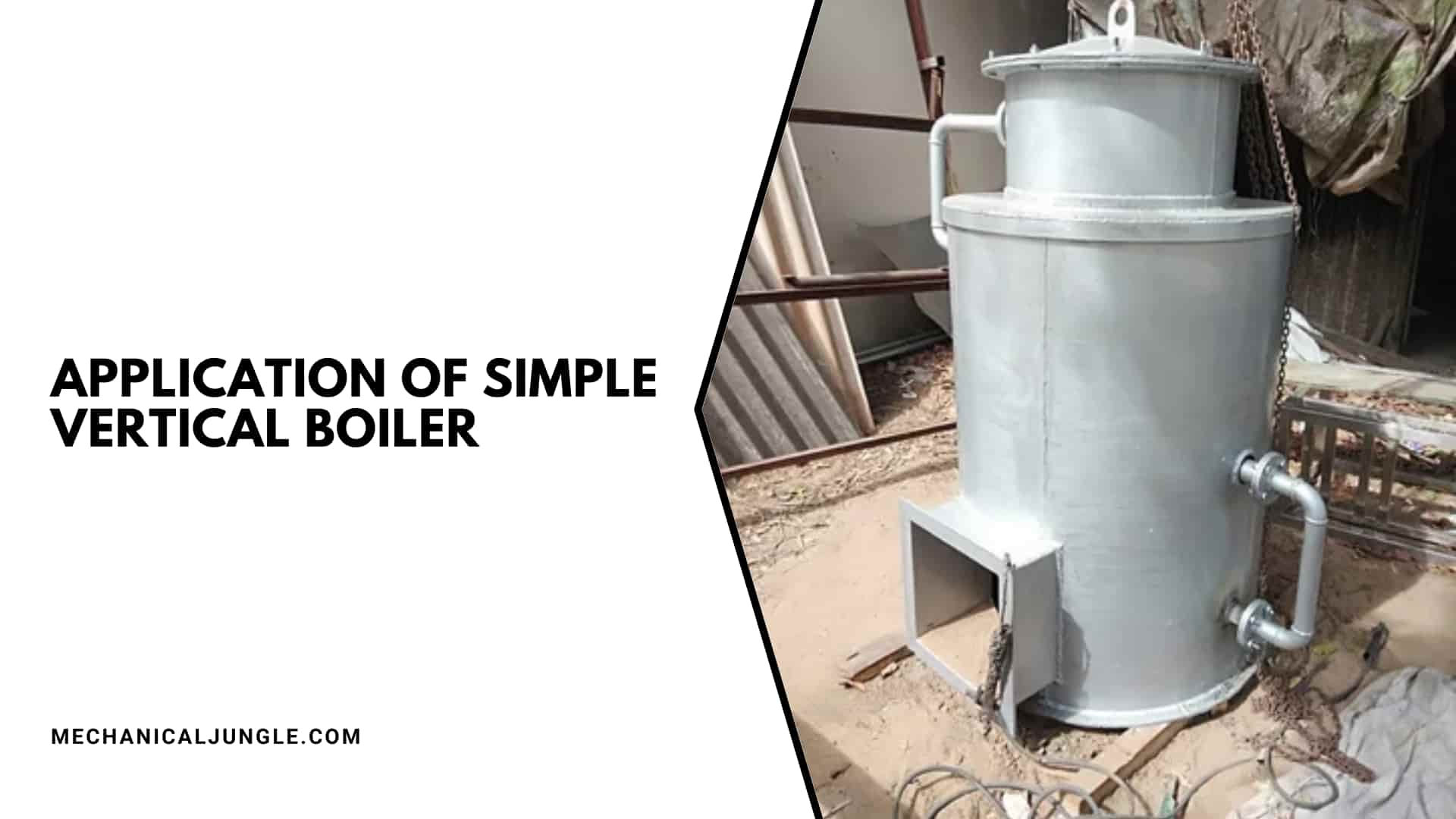
Here, the different Applications of the simple vertical boiler are as follows:
- Simple vertical boilers may have applications; for example, a railway steam engine is a railway engine.
- Simple vertical boilers are used in road vehicles such as steam wagons (steam lorry or steam wagon).
- The simple vertical boiler has a very well-known application that steams the tractor.
- The numbers of boats are particularly small, which uses simples vertical boilers to power the engine.
- In some parts of the world, simple vertical boilers are used in steam asses.
- Simple vertical boilers are also used in steam cranes and steam steels.
Advantages of Simple Vertical Boiler:
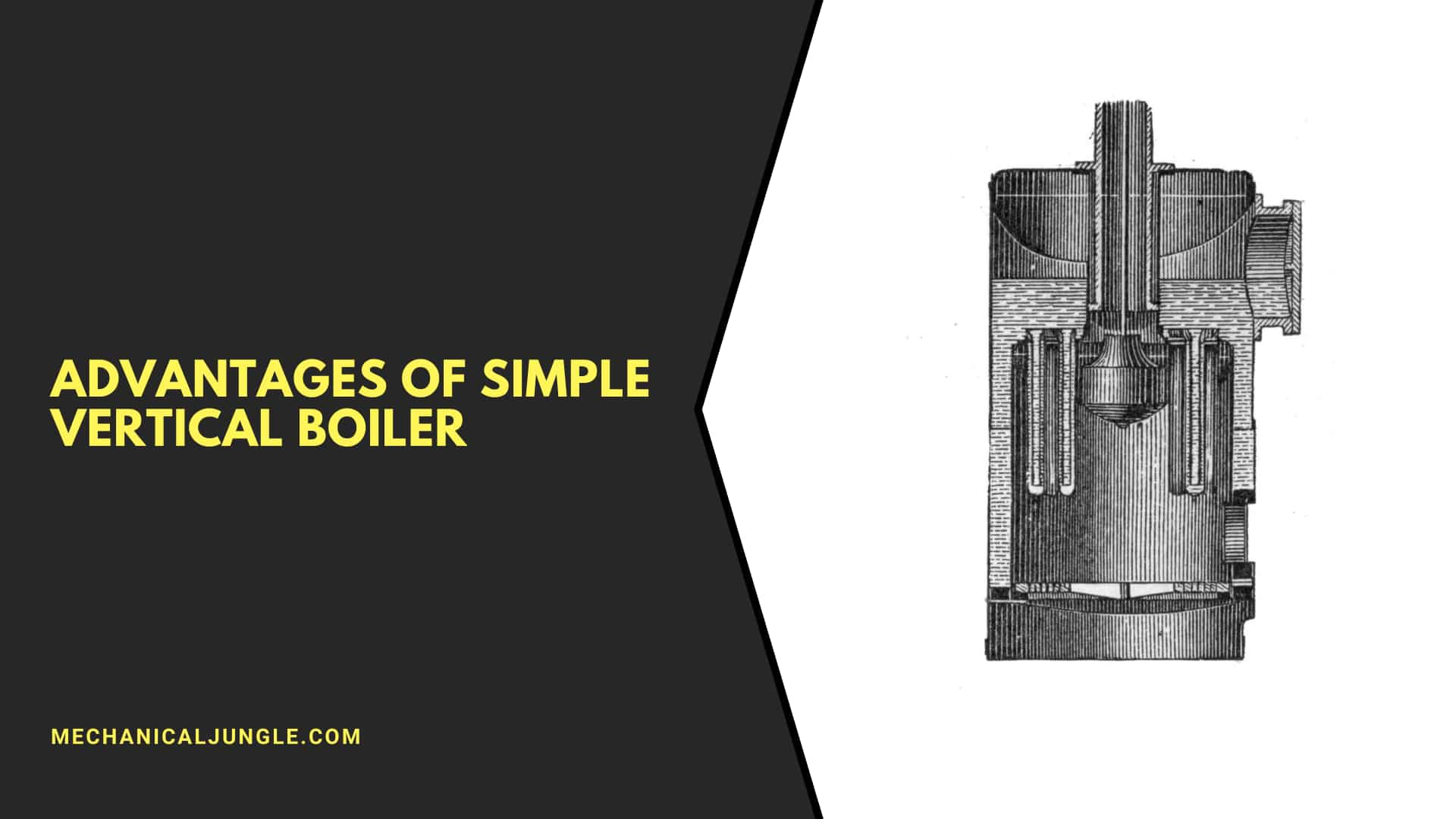
Here, the different Advantages of a simple vertical boiler are as follows:
- Low initial cost because of lesser parts.
- Low maintenance cost.
- Simple working.
- Easy to install and replace.
- Occupy small space on the ground.
- The simple vertical boiler has water level tolerance.
Disadvantages of Simple Vertical Boiler:
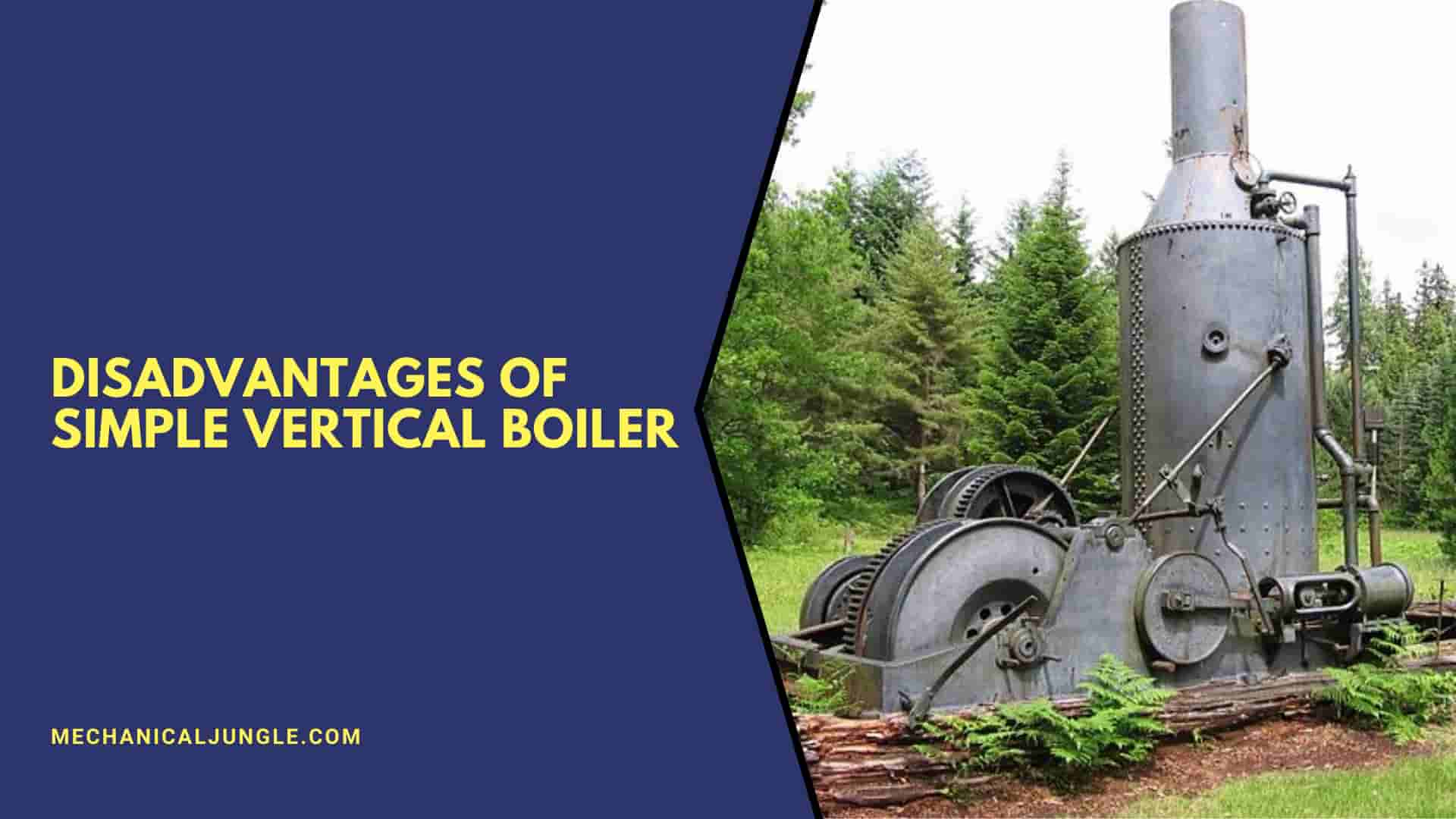
Here, the different Disadvantages of a simple vertical boiler are as follows:
- Vertical design limits its work in many places.
- Production of steam is limited due to the limited melt area.
- Impurities freeze at the bottom and prevent water from heating up.
- Boiler tubes should be kept small to reduce heights. As a result, most of the available heat is lost through the chimneys, as the tubes have very little time to heat.
FAQs about Simple Vertical Boiler
What is a simple vertical boiler?
A simple vertical boiler is a type of fire-tube boiler where water is boiled inside a large vertical cylindrical shell to produce steam at low pressure.
What pressure can a simple vertical boiler produce?
A simple vertical boiler can produce a pressure of about 10 bar.
Why are simple vertical boilers used where space is limited?
Simple vertical boilers occupy very little space due to their vertical design, making them suitable for locations with limited ground space.
How does a simple vertical boiler work?
Fuel is added to the furnace, and as it burns, it produces hot gases. These gases pass through cross tubes, transferring heat to the water to produce steam, which is then collected and used for various applications.
What are the main parts of a simple vertical boiler?
The main parts include the vertical cylindrical shell, cross tubes, furnace (or firebox), grate, fire door or fire hole, ashpit, hand holes, chimney, steam stop valve, safety valve, pressure gauge, water level indicator, and fusible plug.
What materials are used in the construction of a simple vertical boiler?
Simple vertical boilers are typically constructed using steel for the shell, cross tubes, and other major components, while other materials may be used for specific parts like the grate and fusible plug.
What are the applications of a simple vertical boiler?
Applications include powering railway steam engines, steam wagons, steam tractors, boats, steam cranes, and steam rollers.
What are the advantages of a simple vertical boiler?
Advantages include low initial and maintenance costs, simple operation, ease of installation and replacement, small ground space requirement, and water level tolerance.
What are the disadvantages of a simple vertical boiler?
Disadvantages include limited steam production, vertical design constraints, impurity buildup at the bottom, and heat loss through the chimney due to short heating tubes.
How is the water level in a simple vertical boiler monitored?
The water level is monitored using a water level indicator, which is a crucial safety device for ensuring the boiler operates safely.
What is the role of the safety valve in a simple vertical boiler?
The safety valve prevents the boiler pressure from exceeding its normal working pressure by allowing excess steam to escape into the atmosphere until the pressure returns to normal levels.
How does the fusible plug enhance the safety of a simple vertical boiler?
The fusible plug is designed to melt and extinguish the furnace fire if the water level drops too low, preventing potential overheating and explosion.

